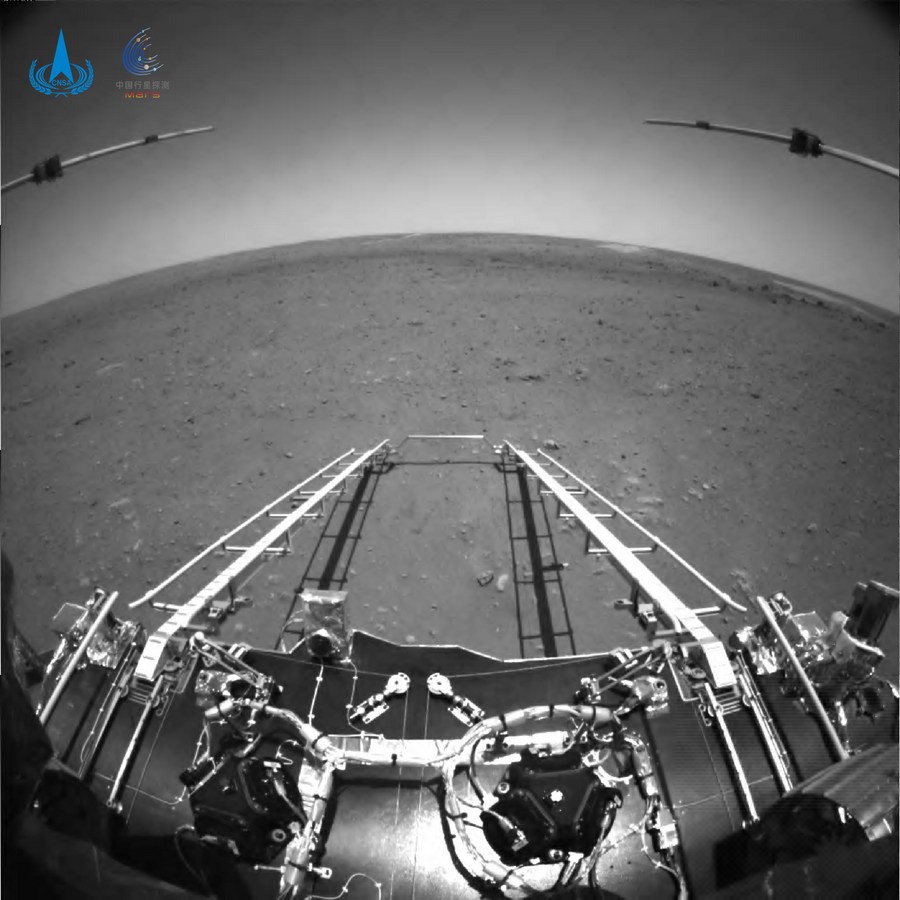China proves its mettle at interplanetary exploration
- By Jay Birbeck
 0 Comment(s)
0 Comment(s) Print
Print E-mail China.org.cn, May 22, 2021
E-mail China.org.cn, May 22, 2021

China just successfully landed its first rover on Mars, becoming the second nation to ever do so. The Zhurong rover, named after the god of fire in Chinese mythology, successfully touched down on May 15 as part of the Tianwen-1 mission, marking a remarkable achievement in the country's progress toward interplanetary exploration.
The ambitious Tianwen-1 mission to Mars – consisting of an orbiter, a lander, and a rover – was launched from the Wenchang Spacecraft Launch Site on the coast of southern China's island province of Hainan on July 23, 2020. It completed its 190-million-kilometer journey to Mars in February 2021. After three months of surveying the Martian surface for an ideal landing zone, scientists initiated the touchdown.
Safely tucked inside a productive shell, the rover-lander bundle detached from the orbiter and plunged into the planet's upper atmosphere to begin a jaw-clenching seven-minute landing sequence – the so-called "seven minutes of terror."
Once the spacecraft punched through the tenuous atmosphere, it jettisoned its protective shell and deployed parachutes to slow its descent. Once it neared the ground, a complex system of thrusters fired up to safely guide it to the surface. By 4:18 pm PT, the Zhurong rover had landed.
The successful landing demonstrates China's technological progress in outer space exploration. Reaching Mars is a difficult and unforgiving endeavor, with no room for mistakes. A large percentage of the 50-odd Mars missions have failed due to rocket malfunctions, faulty components, and critical mistakes.
Now that Zhurong has arrived on Mars, it will begin harvesting data. The rover carries six scientific instruments and cameras to make a range of detections in the Martian atmosphere, magnetosphere, surface, subsurface, and climate. The rover is capable of hunting for signs of water up to 100 meters below the surface as well as vaporizing rock specimens on the surface to reveal their composition. The global scientific community eagerly awaits the results of its tests.
Whatever Zhurong discovers in the Martian deserts, they will provide a bonanza of data for the global scientific community that is expected to contribute to humanity's exploration of space.
China's space technology progress and the data collected from its ventures will not only benefit humanity as a whole but could even hold the key to unlocking the mysteries of the universe.
Jay Birbeck is a writer and art director. He has worked with news outlets including ITV. He received an MSc in Digital Humanities from UCL.
Opinion articles reflect the views of their authors, not necessarily those of China.org.cn.
If you would like to contribute, please contact us at opinion@china.org.cn.






Go to Forum >>0 Comment(s)